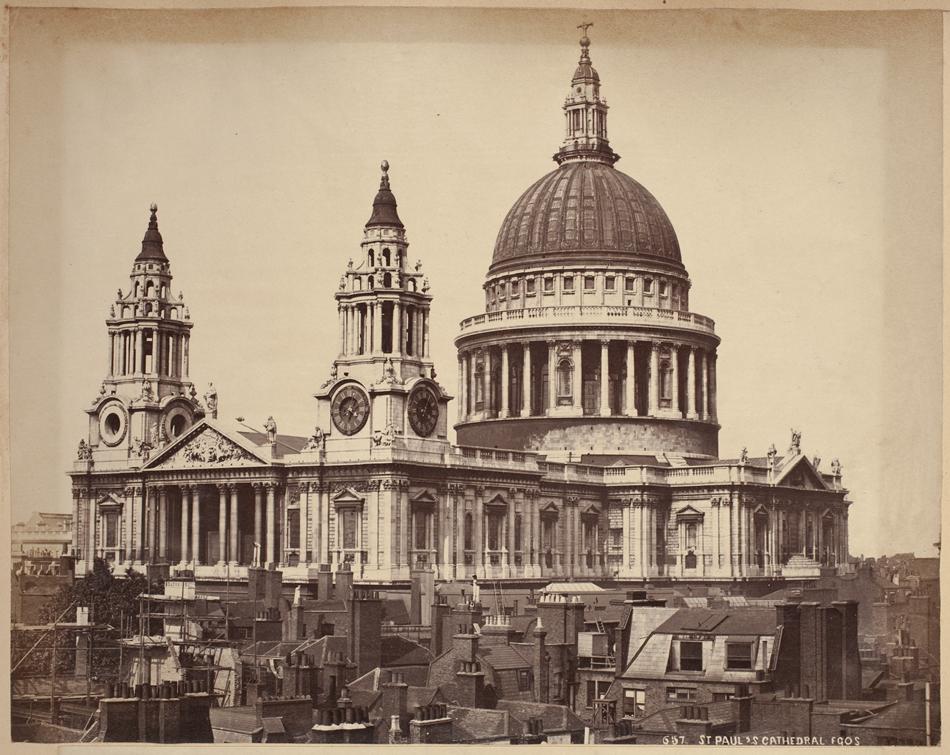St. Pauls Cathedral

The origins of St. Paul’s Cathedral in London trace back to 604 AD when King Aethelberht I erected a cathedral dedicated to St. Paul. This cathedral was burned around 70 years after its construction and then was rebuilt. St. Paul’s Cathedral would be destroyed by another fire and then by the Vikings before it was made into the magnificent Old St. Paul’s Cathedral. This version of the cathedral had a spire that reached higher than the dome of today’s St. Paul’s Cathedral. Unfortunately, this structure was damaged and repaired several times until it was burned in the Great Fire of London in 1666. The present form of the cathedral was built in 1710. The final construction of the cathedral looked incredibly different from the Old St. Paul’s Cathedral. Instead of a spire, a dome was put in its place. A top the dome is a cross which stands 366 feet above ground level.
During the 1800’s when Dicken’s would have viewed the cathedral, it would appear similar to how it does today. The main differences would have only been visible from the inside. Queen Victoria I remarked that St. Paul’s Cathedral was a "most dreary, dingy and un-devotional” place. With this remark, the interior experienced significant changes in the throughout 1800’s. Colorful mosaics and stained glass were added to cathedral and bells were added to the cathedral in 1878. In 1882, the famous “Great Paul” bell was hung in the cathedral which was the largest in the British Isle’s until the Olympic Bell was made for the Olympics in 2012.
What would St. Paul’s Cathedral have meant for citizens of London in the 1800’s? The building itself was by no means the oldest building in London, but it carried the history of the city with it. It stood as a symbol of England in its entirety. Great Englishmen had been being buried in it for years. During the 1800’s alone Admiral Lord Horatio Nelson and the Duke of Wellington were both buried there. When the Duke of Wellington died in 1852, Dickens, joined by a crowd of 13,000, attended the funeral in St. Paul's Cathedral. Dickens noted that the entire event was too extravagant and that upon his death he would prefer a simpler event. The physical appearance of the building was grand and structurally large so it would have been visible from various parts of the city. After knowing the history of the monument and analyzing some of its mentions in Charles Dicken’s Bleak House, one can understand the grand image that St. Paul’s Cathedral was and still is.
Works Cited
“Cathedral History Timeline.” Cathedral History Timeline - St Paul's Cathedral, www.stpauls.co.uk/history-collections/history/cathedral-history-timeline.
“In the Footsteps of Charles Dickens.” In The Footsteps of Charles Dickens, www.dickenslondontours.co.uk/dickens-tour-london.htm.
“Saint Paul's Cathedral.” Encyclopædia Britannica, Encyclopædia Britannica, Inc., www.britannica.com/topic/Saint-Pauls-Cathedral-London.
Parent Map
Coordinates
Longitude: -0.098350600000
